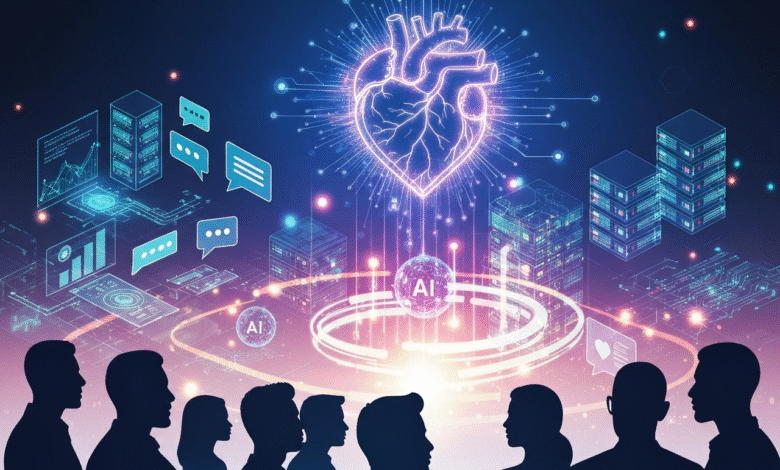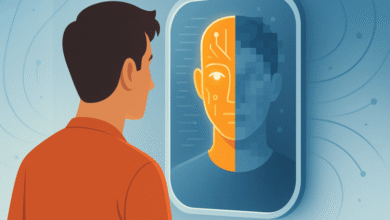Drive Growth with Loyalty-Focused Customer Experiences

▼ Summary
– The keynote emphasized creating loyalty-led growth through superior customer experiences, integrating back-office and front-office operations with AI as an orchestrator.
– SAP survey data revealed a 5% decline in “true loyalty” for B2C customers, while 35% of B2B customers achieve “strategic loyalty” by becoming brand advocates.
– Building customer loyalty requires four elements: understanding customer behavior, fostering connection through personalization, developing two-way relationships with empathy, and delivering value to solidify reciprocity.
– AI should be used as an insights tool integrated with business context to enhance customer touchpoints, rather than just for automation, to overcome the 95% failure rate in achieving expected AI results.
– Successful customer experience strategies depend on a unified data strategy, company-wide customer-first culture, and combining qualitative anecdotes with quantitative data for organizational alignment.
Businesses aiming for sustainable expansion are increasingly recognizing that loyalty-focused customer experiences are the cornerstone of long-term profitability. A recent keynote at SAP Connect 2025, featuring insights from industry giants like Boeing, Wela, and Migros, delved into the strategies required to foster this loyalty-led growth. The central message was clear: superior customer engagement is no longer a luxury but a fundamental business imperative, especially for organizations leveraging the SAP ecosystem.
The physical event in Las Vegas has concluded, but the valuable discussions are accessible through on-demand replays. This particular keynote, along with an AI-generated summary of its core concepts, provides a compelling blueprint for any company serious about deepening customer relationships.
Several critical themes emerged from the session. Leaders emphasized the necessity of integrating back-office and front-office operations, with artificial intelligence serving as a crucial orchestrator. They also stressed using AI not merely for automation but for extracting profound business insights. A significant strategic shift highlighted was the move towards building genuine emotional connections with customers. Unanimously, the panelists agreed that a unified data strategy and a pervasive, company-wide customer-first culture are non-negotiable for success.
Jessica King, Chief Marketing Officer for SAP Customer Experience, opened the discussion by reimagining customer experiences with a focus on loyalty. She shared findings from an extensive SAP survey of more than 13,000 B2B and B2C customers, revealing that long-term loyalty is facing challenges. The data showed a 5% decline in ‘true loyalty’, defined as a deep, passionate connection, among B2C customers. Conversely, in the B2B sphere, 35% of customers achieve ‘strategic loyalty,’ transforming into brand advocates who significantly reduce acquisition costs and boost profitability.
Manas Ravtaplas, Chief Revenue Officer for APAC, MEA, and MEE, contributed his perspective on delivering excellent customer experiences. Following his remarks, Jessica King outlined the four foundational elements for building customer loyalty: understanding, connection, relationships, and value. She explained that everything begins with a deep understanding of customer behaviors and data. This foundational knowledge enables businesses to foster a connection through personalized messages and offers across every channel. That connection then matures into a two-way relationship built on empathy and active listening. Ultimately, delivering tangible value, whether through rewards, fee waivers, or prioritized service, cements this reciprocal relationship, making customers feel genuinely appreciated and securing their lasting loyalty.
Balaji Balasubramanian, President and Chief Product Officer, offered a powerful analogy, comparing the creation of memorable customer experiences to composing music. He suggested that harmony is achieved through precision and orchestration. At SAP, a similar harmony is created between customer-facing teams and back-office operations, powered by enterprise-wide data and AI. He identified AI as the ‘conductor’ that seamlessly connects systems, people, and data. Balaji noted that while many businesses struggle to see returns on their AI investments, SAP’s approach integrates AI with deep business context, making every customer interaction faster, smarter, and more relevant. He also introduced the concept of multi-agentic AI systems working in concert to propel customer-led growth.
Raman Venkat, Director of Digital Strategy and Experience at Boeing, shared his expertise from the aviation sector. His role focuses on the aftermarket services for aircraft, managing the entire 30-year lifecycle of a plane after it enters service to ensure operational excellence for the global fleet.
The session also functioned as a platform for SAP to announce new products and updates for its customer experience suite. A comprehensive demonstration illustrated how these solutions can drive profitable growth. The panel included valuable contributions from key customers, including the Wela Group, a global beauty company, and Migros, a major Swiss grocery retailer, who provided real-world insights into the customer experience landscape within their respective industries.
Key Takeaways from the Session:
- Exceptional customer experiences are like unforgettable songs; they evoke powerful emotions by perfectly blending various elements, mirroring the required harmony between customer-facing and back-office teams.
- Despite massive investments, over 95% of businesses fail to achieve their expected AI outcomes. The issue is rarely the technology itself, but rather how it is constructed and deployed within the specific context of the customer and business processes.
- Behind every customer and market segment is a human being with very specific needs and expectations that must be understood and met.
- Consistent, positive experiences build trust and have the power to transform customers into lifelong brand ambassadors and loyal fans, which is the very essence of loyalty-led growth.
- AI should be perceived as an insights tool, not just an automation tool. It can empower employees, like sales representatives, by providing them with superior information to perform their roles more effectively.
- As AI and bots handle more transactional factors like price and availability, retailers must compete by creating an emotional, attractive, and engaging customer experience to retain customers who are not solely driven by logic.
- True organizational alignment on customer experience is achieved by combining qualitative field anecdotes with quantitative hard data, creating a single, non-negotiable source of truth that drives collaboration.
- A common technology baseline, such as a shared data lake and cloud platform across different business units, is the key to creating a unified 360-degree customer view and fostering genuine, enterprise-wide collaboration.
(Source: ITWire Australia)





